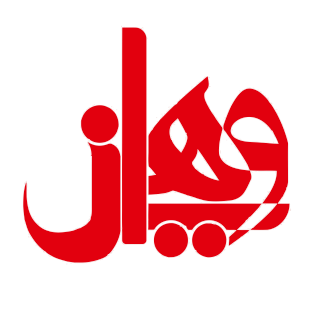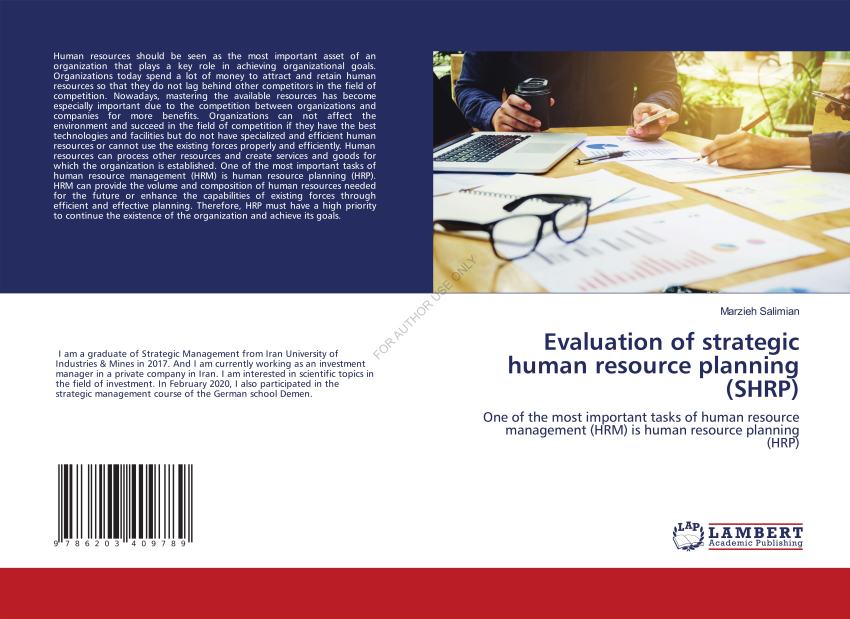کتاب Evaluation of strategic human resource planning (SHRP)
۲۹۱,۰۰۰ تومان قیمت اصلی: ۲۹۱,۰۰۰ تومان بود.۱۷۳,۱۴۵ تومانقیمت فعلی: ۱۷۳,۱۴۵ تومان.
| تعداد صفحات | 97 |
|---|---|
| شابک | 978-620-3-40978-9 |
| انتشارات |

کتاب Evaluation of Strategic Human Resource Planning (SHRP) – ابزاری برای مدیریت منابع انسانی
کتاب Evaluation of Strategic Human Resource Planning (SHRP) به بررسی رویکردهای کلیدی در برنامهریزی استراتژیک منابع انسانی میپردازد. این کتاب با ارائه روشهای عملی و چارچوبهای نظری، به مدیران و متخصصان کمک میکند تا برنامهریزی منابع انسانی را به شکلی مؤثر ارزیابی و پیادهسازی کنند.
درباره کتاب Evaluation of Strategic Human Resource Planning (SHRP)
این کتاب به اهمیت برنامهریزی استراتژیک منابع انسانی در سازمانها و نقش آن در موفقیت کسبوکارها میپردازد. نویسنده، با نگاهی جامع به مسائل و چالشهای این حوزه، به تحلیل مدلها، ابزارها و تکنیکهایی میپردازد که سازمانها را در مدیریت بهینه منابع انسانی یاری میدهند.
موضوعات کلیدی کتاب
- اصول برنامهریزی استراتژیک منابع انسانی: تعریف، اهمیت و اهداف اصلی SHRP در سازمانها.
- ارزیابی کارایی برنامهها: تکنیکهای مختلف برای سنجش اثربخشی برنامههای منابع انسانی.
- مدلهای عملیاتی: بررسی مدلهای برتر جهانی در حوزه برنامهریزی منابع انسانی.
- رهبری و توسعه سازمانی: نقش مدیریت منابع انسانی در تقویت فرهنگ سازمانی و افزایش بهرهوری.
- چالشها و فرصتها: شناسایی موانع موجود در اجرای موفق برنامهریزی استراتژیک و راهکارهای غلبه بر آنها.
ویژگیهای برجسته کتاب Evaluation of Strategic Human Resource Planning (SHRP)
- نگاه تحلیلی و جامع: کتاب با تحلیل عمیق مفاهیم و ارائه راهکارهای عملی، به خواننده دیدگاه روشنی از برنامهریزی منابع انسانی ارائه میدهد.
- مطالعات موردی: شامل نمونههایی واقعی از شرکتها و سازمانها برای درک بهتر مفاهیم.
- رویکرد کاربردی: ارائه ابزارها و تکنیکهایی که قابل استفاده در محیطهای کاری هستند.
- مناسب برای همه سطوح: از مدیران ارشد تا دانشجویان، همه میتوانند از این کتاب بهره ببرند.
چرا کتاب Evaluation of Strategic Human Resource Planning (SHRP) را بخوانید؟
اگر به دنبال بهبود فرآیندهای مدیریت منابع انسانی و دستیابی به نتایج بهتر در سازمان خود هستید، این کتاب یک راهنمای ارزشمند برای شماست. مطالعه این اثر به شما کمک میکند تا برنامهریزی استراتژیک منابع انسانی را با کارایی بیشتری اجرا کرده و به اهداف سازمانی خود نزدیکتر شوید.
مخاطبان کتاب Evaluation of Strategic Human Resource Planning (SHRP)
- مدیران منابع انسانی: برای بهبود عملکرد و توسعه برنامههای استراتژیک.
- متخصصان مدیریت و سازمان: جهت ارتقای مهارتهای برنامهریزی و مدیریت منابع انسانی.
- دانشجویان رشته مدیریت: بهعنوان یک منبع کامل برای آشنایی با اصول و مدلهای SHRP.
- مشاوران کسبوکار: برای ارائه راهکارهای بهتر به مشتریان در حوزه مدیریت منابع انسانی.
سفارش کتاب Evaluation of Strategic Human Resource Planning (SHRP)
برای خرید این کتاب و بهرهگیری از روشهای نوین در برنامهریزی منابع انسانی، به بخش فروشگاه سایت مراجعه کنید یا با ما تماس بگیرید. این کتاب ابزاری مؤثر برای ارتقای مدیریت منابع انسانی در سازمانهاست.
1. کتاب Evaluation of Strategic Human Resource Planning (SHRP) چه موضوعاتی را پوشش میدهد؟ 📚💼
پاسخ: این کتاب به تحلیل و ارزیابی برنامهریزی منابع انسانی استراتژیک (SHRP) میپردازد. شامل فصلهای مختلفی از جمله برنامهریزی استراتژیک، مراحل و فرآیند برنامهریزی منابع انسانی، ارزیابی عملکرد کارکنان، و مدلهای مختلف SHRP میشود. همچنین این کتاب به چالشها، مزایا و موانع اجرای برنامهریزی منابع انسانی استراتژیک نیز میپردازد.
2. فصل اول کتاب در مورد چه موضوعاتی صحبت میکند؟ 📖
پاسخ: فصل اول این کتاب به مقدمهای بر مفهوم برنامهریزی منابع انسانی استراتژیک (SHRP) اختصاص دارد. در این فصل، اهداف کلی و اهمیت SHRP، انواع مختلف برنامهریزی و سبکهای آن، و فرآیندهای پیادهسازی استراتژیهای منابع انسانی مورد بررسی قرار میگیرند.
3. چه تفاوتی بین مدلهای مختلف برنامهریزی استراتژیک منابع انسانی وجود دارد؟ 🤔📊
پاسخ: در این کتاب مدلهای مختلف برنامهریزی استراتژیک منابع انسانی بررسی میشوند که شامل مدلهای مبتنی بر منابع، مدلهای تئوریمحور، و مدلهای نقطه مرجع استراتژیک (SRP) هستند. این مدلها به شرکتها کمک میکنند تا منابع انسانی خود را به نحوی استراتژیک مدیریت کنند تا به اهداف بلندمدت سازمان برسند.
4. برنامهریزی منابع انسانی (HRP) چیست و چه مراحلی دارد؟ 🧑💼📈
پاسخ: برنامهریزی منابع انسانی (HRP) فرآیندی است که به شرکتها کمک میکند تا نیروی کار خود را بهطور مؤثر و کارآمد مدیریت کنند. مراحل HRP شامل شناسایی نیازهای منابع انسانی، تحلیل نیروهای موجود، برنامهریزی برای استخدام و آموزش و بهکارگیری منابع انسانی است. این فرآیند به سازمانها کمک میکند تا منابع انسانی خود را به شکل استراتژیک در جهت اهداف سازمانی تنظیم کنند.
5. چرا اجرای استراتژیهای منابع انسانی استراتژیک (SHRP) با چالشهایی مواجه است؟ ⚠️🛑
پاسخ: چالشهای اجرای SHRP شامل محدودیتهای منابع، مقاومت در برابر تغییرات، ناتوانی در پیشبینی دقیق نیازهای منابع انسانی، و کمبود حمایت مدیریت عالی است. همچنین، بسیاری از سازمانها به دلیل پیچیدگیهای فرآیندها و نبود فناوریهای مناسب در این زمینه با مشکلاتی روبهرو هستند.
6. چگونه سیستمهای اطلاعات منابع انسانی (HRIS) میتوانند در برنامهریزی منابع انسانی (HRP) مفید باشند؟ 💻🔍
پاسخ: سیستمهای اطلاعات منابع انسانی (HRIS) ابزارهای دیجیتال هستند که به سازمانها کمک میکنند تا دادههای مربوط به نیروی انسانی را جمعآوری، ذخیره، و تحلیل کنند. این سیستمها با ارائه اطلاعات دقیق و بهموقع به سازمانها کمک میکنند تا تصمیمات بهتری در مورد استخدام، آموزش و توسعه کارکنان اتخاذ کنند.
7. ارزیابی عملکرد کارکنان چیست و چرا مهم است؟ 🎯📈
پاسخ: ارزیابی عملکرد کارکنان فرآیندی است که در آن عملکرد افراد در محیط کار ارزیابی میشود. این ارزیابی به سازمانها کمک میکند تا نقاط قوت و ضعف کارکنان خود را شناسایی کرده و از این اطلاعات برای بهبود عملکرد کلی سازمان استفاده کنند. ارزیابی عملکرد برای مدیریت منابع انسانی و برنامهریزی برای توسعه فردی و تیمی اهمیت زیادی دارد.
8. برنامهریزی استراتژیک منابع انسانی چه تأثیری بر عملکرد سازمان دارد؟ 🚀🏢
پاسخ: برنامهریزی استراتژیک منابع انسانی به سازمانها کمک میکند تا منابع انسانی خود را با اهداف استراتژیک هماهنگ کرده و در نتیجه عملکرد بهتری در تحقق اهداف سازمانی داشته باشند. این فرآیند به سازمانها امکان میدهد تا نیروی انسانی خود را به نحوی مدیریت کنند که کارایی و بهرهوری در سطح بالا باقی بماند.
9. چه مدلهای مختلفی برای ارزیابی عملکرد وجود دارد؟ 📊⚙️
پاسخ: در کتاب، مدلهای مختلفی برای ارزیابی عملکرد معرفی شدهاند. مدلهای سنتی و مدرن ارزیابی عملکرد تفاوتهای زیادی دارند. مدلهای سنتی معمولاً بر ارزیابی فردی تمرکز دارند، در حالی که مدلهای مدرن به ارزیابی تیمی و بازخورد 360 درجه توجه دارند.
| تعداد صفحات | 97 |
|---|---|
| شابک | 978-620-3-40978-9 |
| انتشارات |
محصولات مشابه
-
کتاب Biofertilizers and soybean growth
۳۸۴,۰۰۰ تومانقیمت اصلی: ۳۸۴,۰۰۰ تومان بود.۱۹۲,۰۰۰ تومانقیمت فعلی: ۱۹۲,۰۰۰ تومان. -
کتاب Enforcement of Hudud Punishments in the Age of Occultation
۳۹۹,۰۰۰ تومانقیمت اصلی: ۳۹۹,۰۰۰ تومان بود.۱۹۹,۵۰۰ تومانقیمت فعلی: ۱۹۹,۵۰۰ تومان. -
کتاب Silver Nanoparticles: Synthesis and Their Biological Applications
۳۱۵,۰۰۰ تومانقیمت اصلی: ۳۱۵,۰۰۰ تومان بود.۱۸۴,۲۷۵ تومانقیمت فعلی: ۱۸۴,۲۷۵ تومان. -
کتاب Advances in Dissimilar Welding of Steel to Copper
۲۱۰,۰۰۰ تومانقیمت اصلی: ۲۱۰,۰۰۰ تومان بود.۱۵۷,۵۰۰ تومانقیمت فعلی: ۱۵۷,۵۰۰ تومان.












